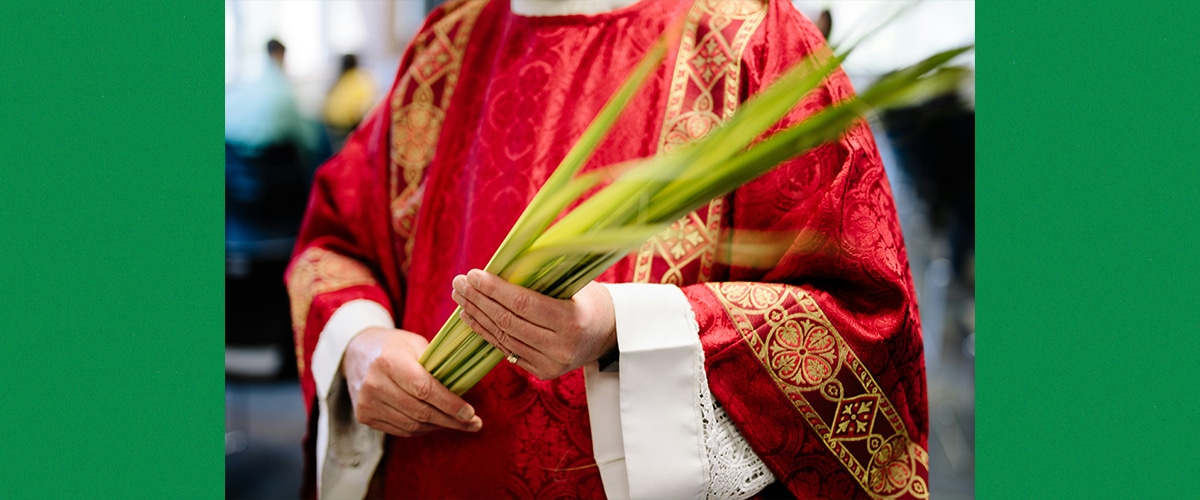HOLY Week began on Sunday, March 24, to mark the Catholics’ weeklong commemoration of the Passion of Jesus Christ.
It’s seen as the most important week in Catholicism, starting with Palm Sunday (March 24) and ending with Easter Sunday (March 31) the following week. It allows Catholics to remember everything Christ has done for them and reflect on what they can do to be better followers of Him.
There are those, however, who may not be familiar with Holy Week or are still hazy about the particulars of the celebration. If you’re unsure of what’s going to happen in the days to come, let republicasia explain it to you.
Palm Sunday
Palm Sunday celebrates the day that Jesus entered Jerusalem as the Savior and King. He arrived on a donkey, with several people quickly approaching him, laying palm branches and cloaks across the road.
They celebrated Jesus, calling Him the Son of David, shouting: “Hosanna in the highest heaven.” It was on that day that Jesus began his journey towards the cross, and it was also the Sunday before his death.
On this day, Catholics are expected to attend mass with blessed palm leaves. Depending on the church you go to, you may also expect that during the mass, the palms will be gathered and burned into ashes, to later be used on Ash Wednesday. Usually, though, the churchgoers are allowed to bring these palm fronds home.
It is also on this day that the pabasa starts, also known as the chanting of verses about Christ’s suffering, all the way until Maundy Thursday.
Holy Monday, Tuesday, and Holy/Spy Wednesday
On Holy Monday, Catholics commemorate The Cleansing of the Temple, as seen in Matthew 21: 12-13, when Jesus and his disciples entered the courts of the temple only to find that people had set up merchant booths all over His house.
In a fit of rage, he started to overturn the tables and the benches, saying: “My house will be called a house of prayer, but you are making it a den of robbers.”
Catholics also reflect on the story of the fig tree, wherein Jesus said to a fig tree: “May you never bear fruit again.” Immediately the tree withered, and he said that those with faith can do the same thing he did to the fig tree.
“If you believe,” He said,
“You will receive whatever you ask for in prayer.”
The times wherein Jesus was questioned by authorities on His power, as well as His anointing at Bethany, are also often discussed during the liturgy in mass during these days.
On Holy Tuesday, the time when Christ predicted His death is discussed. It was also on these two days that Jesus spent the last of His time with his disciples, and his feet were anointed by a woman.
Holy Wednesday, or Spy Wednesday, focuses on Judas’s betrayal of Jesus for 30 pieces of silver. Here, he told the chief priests that the man he kisses is the Son of God. It is for this reason that this day is sometimes called “Spy Wednesday,” as Judas was the spy among Jesus’ disciples.
Maundy Thursday
Maundy Thursday is when Jesus held the Last Supper for His disciples. Here, He announced that one of His disciples would betray Him. It is the event before Jesus was crucified.
Filipinos often celebrate this by churches organizing reenactments of the Last Supper, as well as by fasting and avoiding alcohol, eating meat, or partaking in intercourse. Mass during this time starts with the “Chrism Mass,” wherein Chrism oil is blessed and priests renew their vows.
In the Mass of the Lord’s Supper, the priest then washes the feet of 12 people.
Filipinos are also encouraged to participate in Visita Iglesia, wherein they are expected to visit seven churches within the day. Others, however, visit 14 as a symbol of the 14 stations of the cross. There are also places that hold hourly prayer vigils, often lasting until midnight.
Often, this is when businesses start to close shop for the week, only resuming operations on Black or Holy Saturday.
Good Friday
It is on Good Friday that Jesus was crucified, and it is also the day that He died, representing the sacrifices He made to save His people.
There are places in the country (Pampanga, for example) that pin worshippers on crosses with spikes. Others participate in processions wherein they beat themselves with whips and bamboo sticks, carry crosses, or receive lashes just as Jesus did.
These practices, however, are often frowned upon and are not encouraged.
Other practices during Good Friday are remembering Jesus’ “Seven Last Words,” wherein priests and parishioners share their reflections on Jesus’s last expressions while He was on the cross.
Some hold the senakulo on this day, otherwise known as the Passion Play or the Easter pageant, which reenacts the Passion of Christ.
The Veneration of the Holy Cross is held at 3 p.m., which is the time that people believe Jesus passed away. The procession of Santo Entierro then starts, wherein a number of holy images are brought alongside a sculpture of Christ’s dead body.
Black / Holy Saturday
On Black or Holy Saturday, Filipinos celebrate the Harrowing of Hell, wherein Jesus’ body was placed in the tomb. It is also said that it was on this day that He descended into Hell and then opened the gates to Heaven for those who had gone before Him.
This day is seen as one of mourning and is seen as the last day of fasting for Filipinos, though people are still urged to only eat light, simple meals, preferably without meat.
The cross at the altar is covered with a black cloth, and the Easter Vigil happens during this time. Here, the Paschal Candle is lit during the start of the vigil, representing Christ, who was resurrected at this time.
Baptisms are usually held during this time, while others observe the Stations of the Cross.
Easter Sunday
On Easter Sunday, Catholics celebrate Christ’s resurrection, signifying joy and hope as His light was able to triumph over darkness.
Here, men and women often go off into separate processions as Filipinos celebrate the Salubong, wherein Filipinos put up statues of the risen Christ and the Virgin Mary wearing a veil, otherwise known as the Virgen Maria Alegria or the Virgin of Joy.
The two groups then meet back at the church, which symbolizes the reunion between Christ and Mary.
The veil Mary is wearing is then removed, and then fireworks are lit up and shot into the sky.
The church bells are finally rung once more, and people celebrate the resurrection of Christ, often through a delicious feast with meals like lechon, adobo, kare-kare, and pancit.









